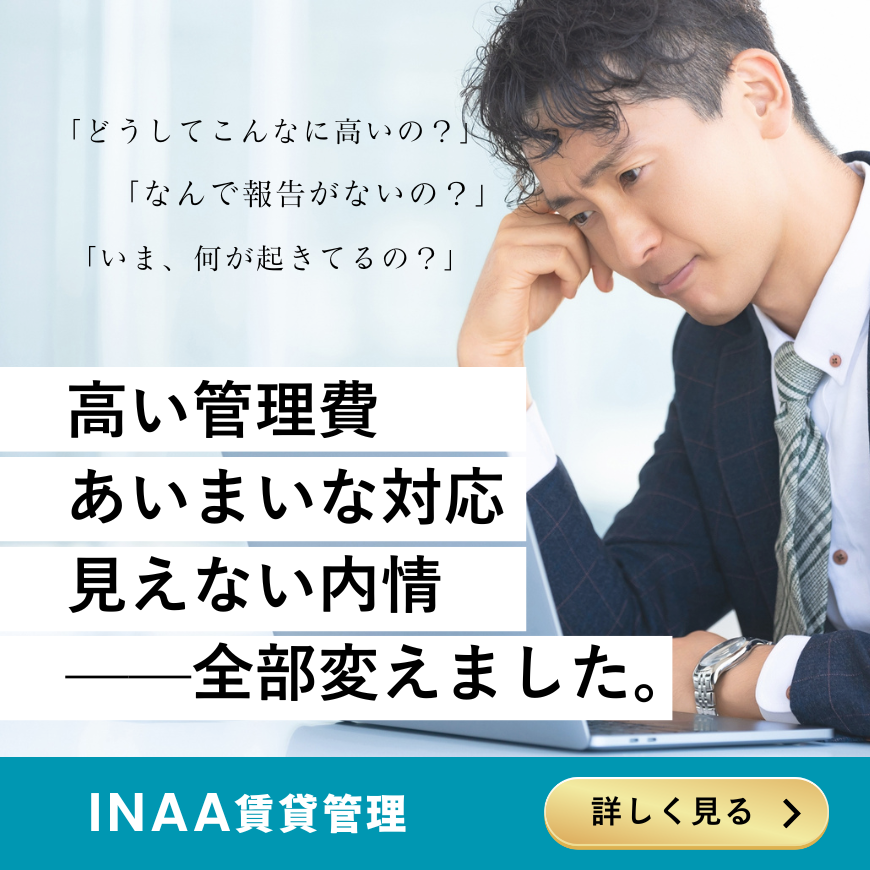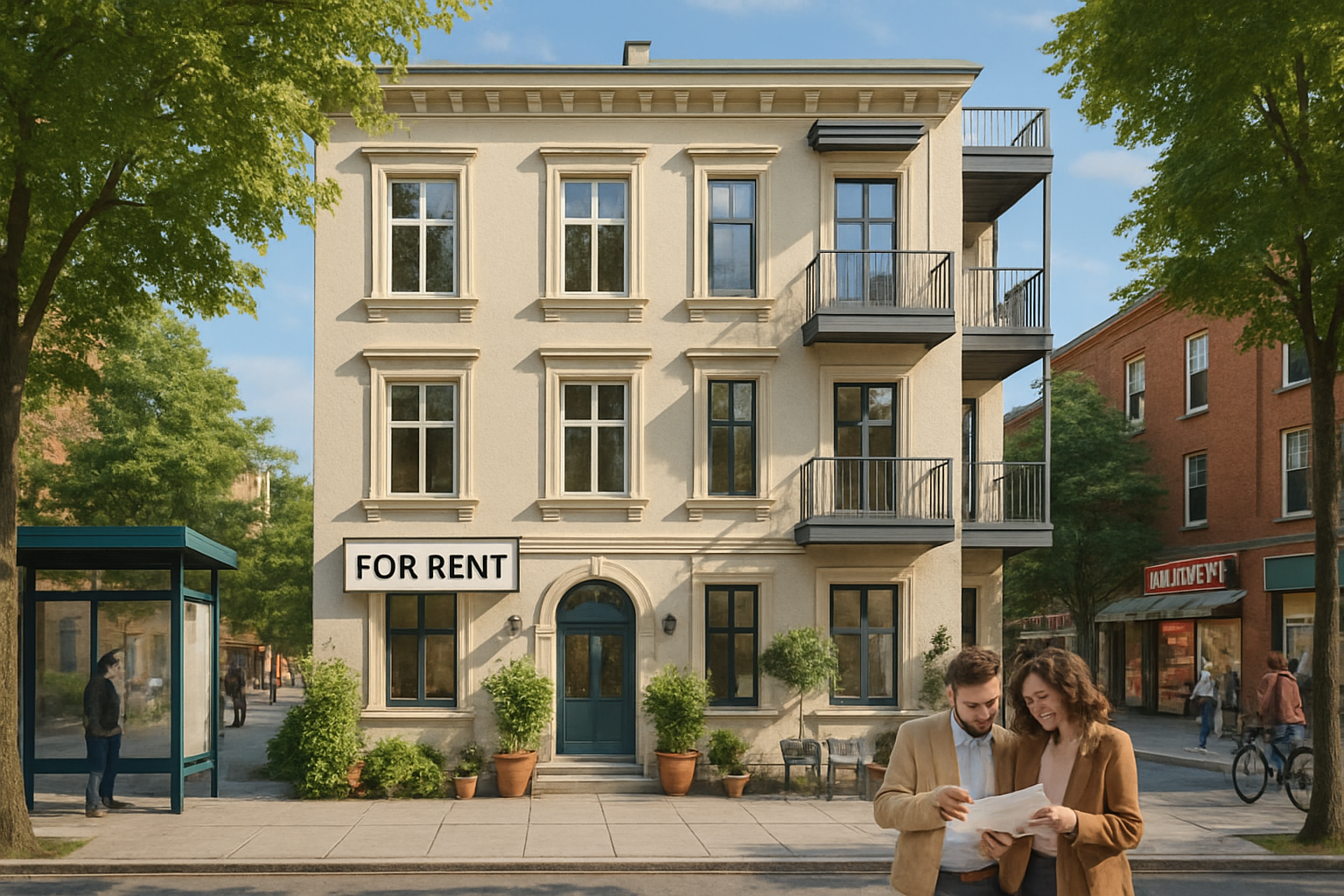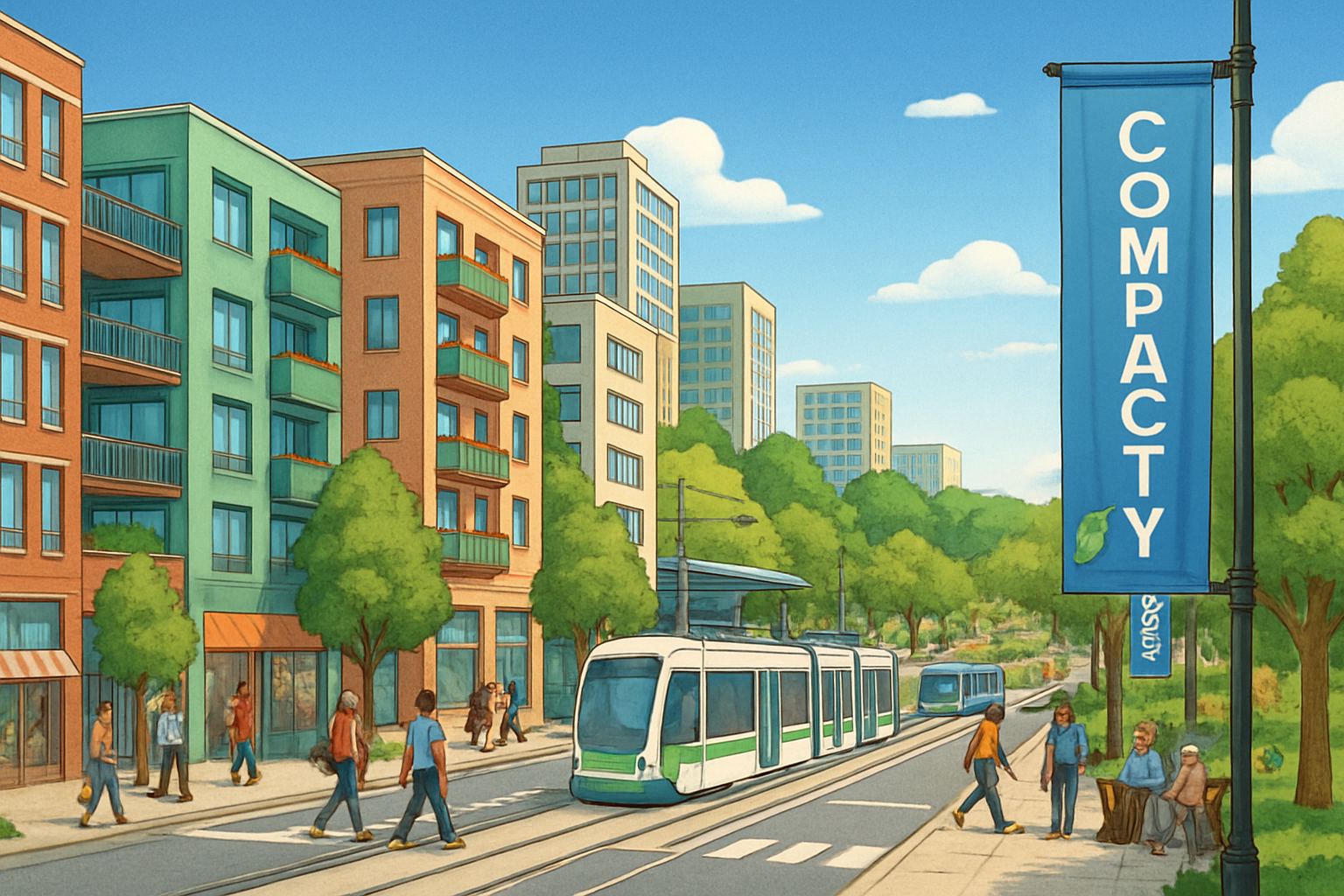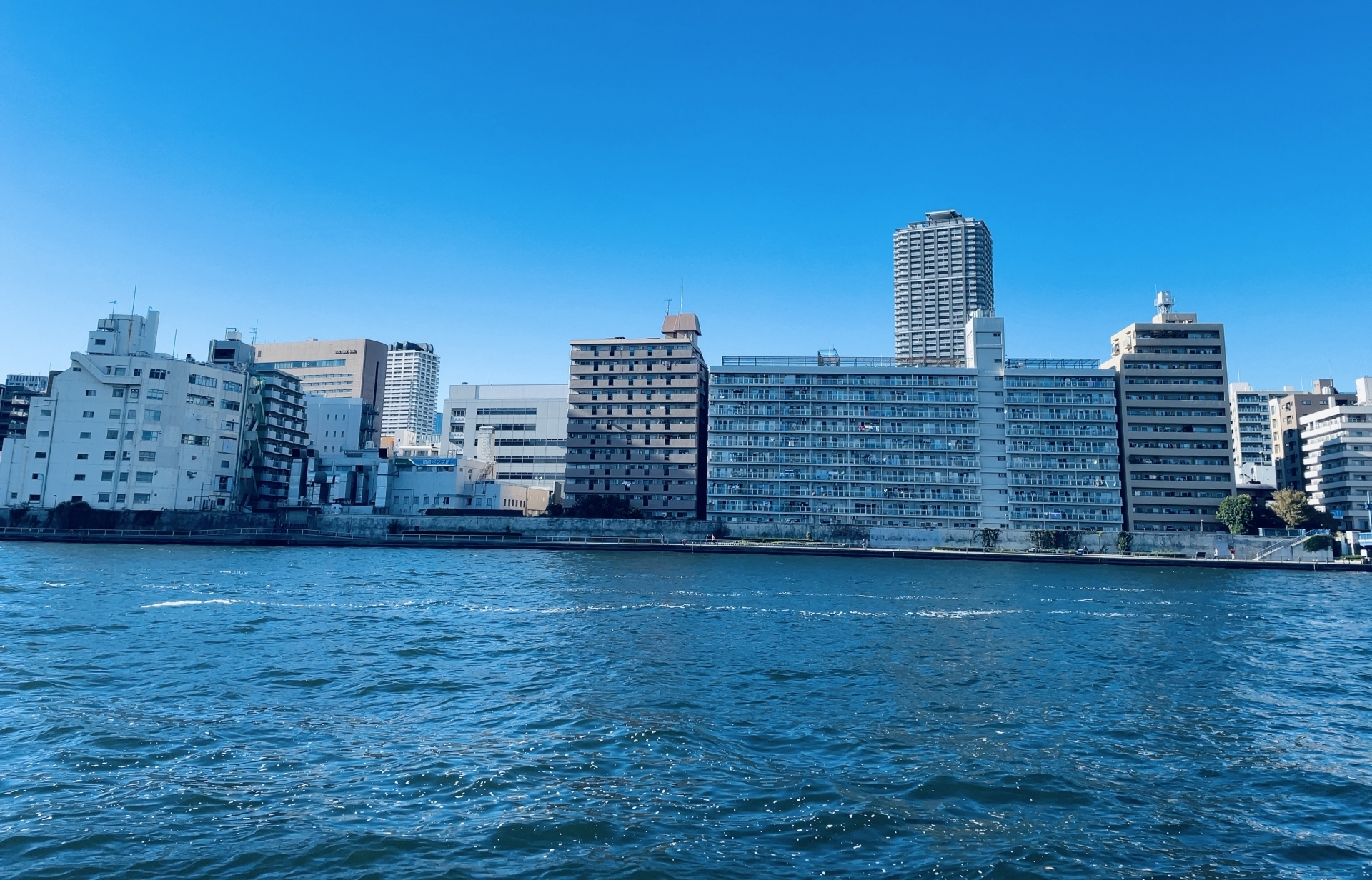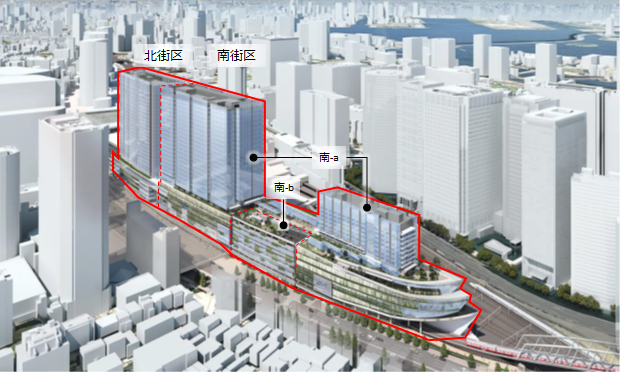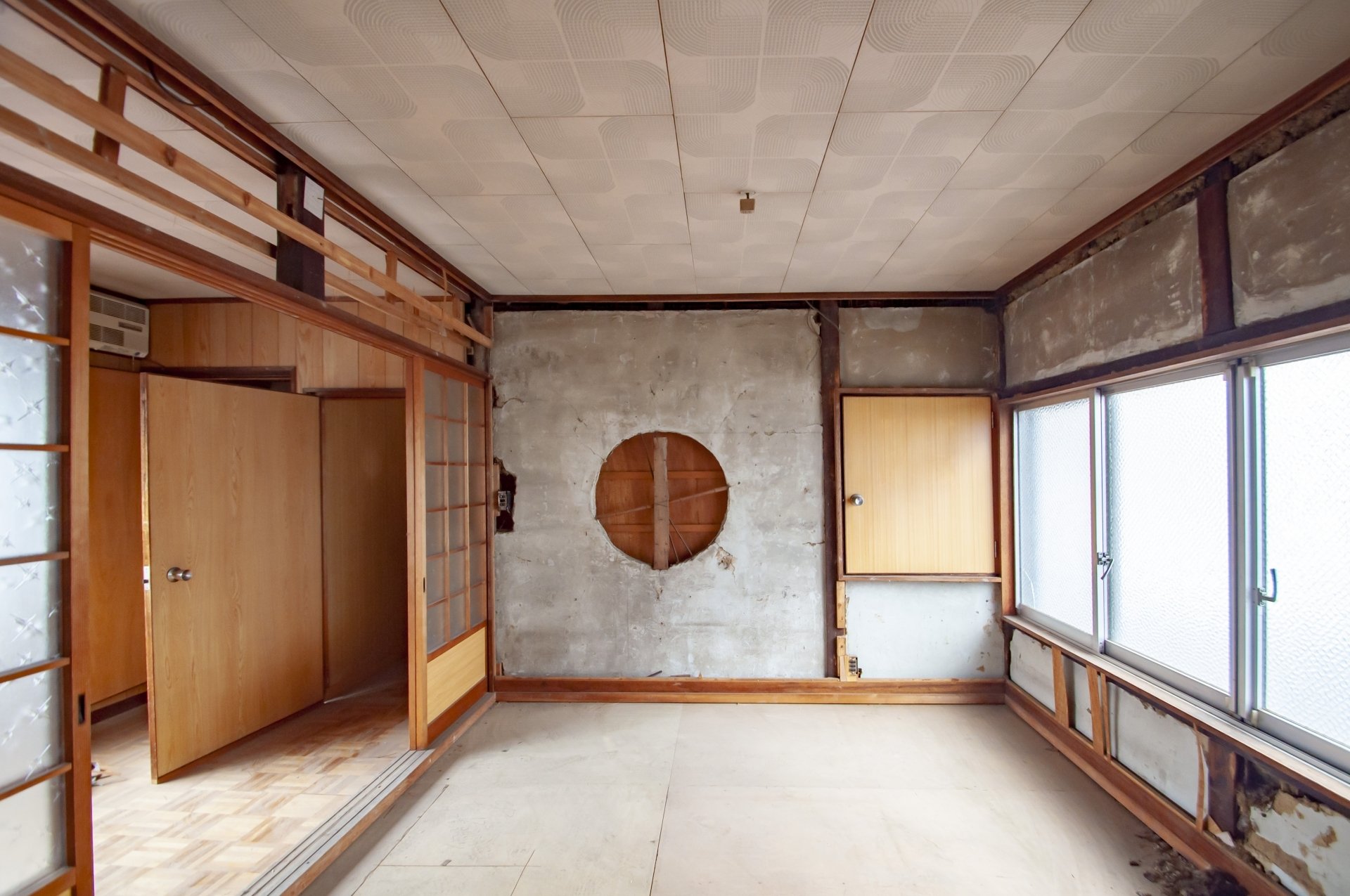In the Japanese housing market, "old properties" that are more than 20 years old now account for more than 60% of the market. Many owners may have the common concerns that the value of their old properties is declining and that they are worried about measures to prevent vacancies. However, we believe that by correctly understanding the changes in the market and implementing appropriate strategies, older properties have the potential to be transformed into "highly profitable assets" that are even more attractive than newly built properties.
In this article, I, INA & Associates, Inc., a real estate expert, will thoroughly explain the common features of properties that can be rented at a high price even if they are old properties. From data-based market analysis, to cost-effective renovation methods, to actual examples of successful rental management, I will provide specific and practical information. By reading this article to the end, you will be able to maximize the potential value of your property and find a path to stable rental management.
Background of the "Treasure" of Older Properties
Current Status of Older Properties: Market Trends as Seen in the Data
According to the 2023 Survey of Housing and Land Statistics published by the Statistics Bureau of the Ministry of Internal Affairs and Communications, 64% of Japan's total housing stock in 2023 will consist of properties that are 20 years old or older. This fact clearly indicates that older properties are no longer the exception, but the "majority" in the market. This is due to structural factors such as the large supply of housing in the 1990s and the subsequent decline in new supply. The properties on the market are inevitably getting older and older.
Why are older properties attracting attention now?
On the other hand, we do not believe there is any need to be pessimistic about this phenomenon. Rather, it represents the arrival of new business opportunities. The recent sharp rises in material and labor costs have pushed up the prices of new properties, making it difficult to improve yields onreal estate investments. In this market environment, renovatingolder properties, which are relatively more affordable, is attracting attention as a more realistic and profitable option.
In addition, today's tenants have more diverse values. Rather than a standardized new property, an increasing number of people are actively choosing properties that have been renovated to add their own unique character and flavor. This is an indication that tenants' needs are shifting from a single value standard of "newness" to "creating a lifestyle that is unique to you.
Three conditions common to old properties that can be rented at a high price
Based on our many years of experience, we have discovered that there are clear commonalities among older properties that can be rented at a high price. These are "location," "renovation," and "management system. Rather than optimizing each of these individually, it is essential to strategically enhance them as a trinity.
Condition 1: Unparalleled "Location Power
The most universal and powerful factor that determines the value of real estate is "location. This principle does not waver even for older properties. In fact, the importance of location increases as the attractiveness of the building itself declines with age.
In addition to the basic requirement of being within a 10-minute walk from a station, the availability of convenient facilities such as supermarkets, convenience stores, hospitals, and parks will greatly influence tenants' evaluations. In addition, a macro perspective that keeps abreast of future trends in urban planning and redevelopment and assesses the future potential of the entire area is also essential to maintaining and improving asset value over the long term.
Condition 2: Strategic "renovation" in line with the times
Older properties that can be rented at a high price are, without exception, renovated appropriately for the times. The key here is to go beyond mere "restoration" to its original condition. It is necessary to accurately grasp the potential needs of tenants and aim to "create added value" not found in competing properties. In particular, water facilities such as kitchens and bathrooms are one of the most important points for tenants, and can be considered a particularly cost-effective investment target among renovations.
| Investment Target | Specific renovation details | Expected Effects | Estimated cost |
|---|---|---|---|
| Water area | Replacement with a system kitchen, renewal of unit bath, installation of hot-water washing toilet seat and independent wash stand | Dramatic improvement in tenant satisfaction, especially likely to attract female tenants | 500,000 - 2,000,000 yen |
| Interior decoration | Change to solid wood flooring, adoption of design-oriented accent cloths, introduction of indirect lighting | Differentiation of the property, improvement of the impression at the time of viewing due to the improved design | 300,000-1,000,000 yen |
| Facilities | Introduction of free Wi-Fi, installation of delivery boxes, replacement with intercom with monitor | Provide a sense of security through improved convenience and enhanced security | 100,000 - 500,000 yen |
Condition 3: "Property management" system that creates trust
No matter how excellent the location or how wonderful the renovations are, tenants will never be satisfied if the daily property management is not up to par. Are the common areas well cleaned, are the rules for garbage disposal observed, and do they respond promptly to any problems with equipment? The accumulation of these seemingly simple management tasks is what fosters trust and attachment to the property, which in turn leads to long-term occupancy.
The cornerstone of stable management is to understand the advantages and disadvantages of both "self-management," in which the owner manages the property himself/herself, and "outsourced management," in which the owner outsources to a professional management company, and to establish an optimal management system that suits your own situation.
| Comparison Items | Self-management | Outsourced Management |
|---|---|---|
| Cost | No management consignment fee is required, which is advantageous in terms of cash flow | Management consignment fee of around 5% of rental income is incurred |
| Time and effort | Recruitment of tenants, handling of complaints, cleaning, troubleshooting, etc. all need to be done by the tenant. | A specialized company handles complicated tasks on your behalf. |
| Expertise | Considerable knowledge and experience are required to respond to legal changes and solve specialized problems. | Accumulated professional know-how and network can be utilized. |
| Recommendation | Owners whose properties are located nearby and who can devote sufficient time to rental management | Owners in remote areas, owners of multiple properties, and those who are busy with their main business |
Renovation Strategy
It is very important to learn not only from theory but also from actual successful cases.
| Key points of success | Explanation |
|---|---|
| Clear target setting | Create a concrete image of "who you want to rent to," and make sure to create properties that resonate with that persona. |
| Selection and concentration | Prioritize investments based on the needs of the target market, rather than trying to create everything new. |
| Verify cost-effectiveness | Conduct specific simulations to determine how many years the invested capital can be recouped through rent increases. |
| Utilization of specialists | For design and construction, consult with renovation companies and designers with extensive experience in revitalizing old properties. |
Conclusion: To turn an old property into a "highly profitable asset
As explained in this article, in order to rent an old property at a high price, it is essential to optimize the three elements of "location," "renovation," and "management" in a three-in-one management perspective. The property's inherent potential must be maximized, and its value must be continually refined to meet the needs of the tenants of the times. We are convinced that this is the key to success in the future of rental management.
By creating value strategically, rather than giving up because the property is old, your property will be transformed into a "highly profitable asset" that will be chosen by the market.
INA&Associates has been involved in the revitalization of many old properties. We provide one-stop support from property potential assessment, to proposing the optimal renovation plan, to establishing a reliable management system. Please feel free to contact us if you have any concerns regarding your property or real estate investment. We will propose the best solution for each and every client's situation.
Frequently Asked Questions (Q&A)
Q1:How much should I look at for renovation costs?
A1: It varies greatly depending on the scale and content of the project, but a general guideline is between 500,000 yen and 3 million yen for a studio, and between 2 million yen and 8 million yen for a family type. However, the important thing is not to think only in terms of budget, but to simulate in detail in advance whether the investment can be realistically recovered by increasing rent and improving occupancy rates.
Q2:Up to how many years old is a building eligible for investment?
A2:The statutory useful life (22 years for wooden structures, 34 years for steel structures, and 47 years for RC structures) is only a standard for depreciation under tax law and does not indicate the physical life of the building. The condition of a building will vary greatly depending on how it has been managed. If proper repairs and maintenance are continuously carried out, even a property well beyond its legal useful life can be an excellent income-producing property. What is important is not the age of the building itself, but rather that a specialist correctly diagnose the condition of the building's structural framework and deteriorated water supply and drainage pipes.
Q3:What is the first step to take if a vacancy is not filled?
A3: The first step is to objectively analyze the cause of the vacancy. We look for the cause from various angles, such as whether the rent is not out of line with the surrounding market rate, whether the property's attractiveness is sufficiently conveyed to prospective tenants on the Internet advertising media, and what the impression of the room is at the time of the inspection. It is then important to start with the most cost-effective measures, such as adjusting the rent, re-taking advertising photos, and implementing remodeling.
Q4:How do I choose a good renovation and management company?
A4: Of course, the company should have a wealth of experience, but it is even more important to choose a company that listens carefully to your requests and makes proactive proposals based on its knowledge as a specialist. We recommend that you obtain quotes from multiple companies and compare their responses, proposals, and the transparency of their quotes. Also, if you consult with a real estate consulting firm such as ours, we can introduce you to reliable partner firms that have met our strict criteria.
Q5:Should I also consider selling the property (exit strategy)?
A5: Yes, it is extremely important to plan for the "exit strategy" of rental management. You need to decide how much to invest in renovations while considering the expected price and market timing when selling the property in the future. Always be prepared to sell at the optimum time so that you can flexibly respond to changes in real estate market conditions and your own life plans, which is a wise approach to a successful real estate investment.

Daisuke Inazawa
Representative Director of INA&Associates Inc. Based in Osaka, Tokyo, and Kanagawa, he is engaged in real estate sales, leasing, and management. He provides services based on his extensive experience in the real estate industry. Based on the philosophy that “human resources are a company's most important asset,” he places great importance on human resource development. He continues to take on the challenge of creating sustainable corporate value.

.png)
